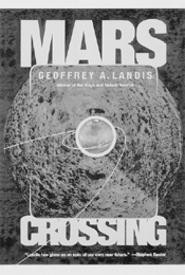"I'd been learning so much about Mars from work and realizing that it would be a really neat place to explore," recalls Landis, who will be speaking on "Mars in Fact and Fiction" on Tuesday at Parma Regional Library. "I wanted to show what Mars would really be like."
Relying on orbital maps and surface images of Mars, Landis had no trouble envisioning what his characters would see, like massive canyons five miles deep and as wide as the Grand Canyon is long. So instead, he imagined how people there would actually react -- a question NASA has also considered in planning real manned trips to Mars.
"It would be very hard. You're on Mars, and it's not clear you're going to get back," Landis says. "Of course, in fiction you're trying to make it hard on your characters, so I gave them a lot of interpersonal problems." He points out that Antarctic explorations prove teams can, in reality, work and survive together in extremely hostile locations, and the last thing he wanted to do was perpetuate common misconceptions or pen a tale his NASA colleagues would "throw down in disgust."
"There's a lot of things that really have been very unrealistic in fiction," he explains. One of his pet peeves is people asking him about the alien origins of the "face" on Mars. "I'm surprised how many times you're reading a book about a Mars expedition, and to make it exciting, they find artifacts of an alien civilization. My astronauts do find fossils of ancient life on Mars, but no aliens. I tried to make it as realistic as possible."


